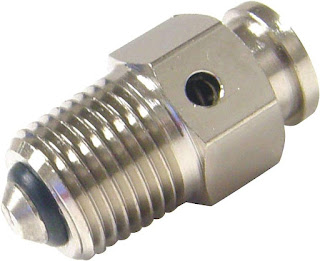Pneumadyne Valve Design Innovations That Are Changing Fluid Control
Fluid control is where small details make big differences. Lines run better when parts are compact, responsive, and easy to maintain. Pneumadyne Valve designs stand out because they keep flow steady, cut leaks, and fit into tight spaces without fuss. Engineers get reliable control, cleaner installs, and simpler upkeep—all of which add up to fewer stops and smoother days on the floor. In this article, we will discuss how these design improvements are reshaping the future of fluid control.
Advancing Control through Smarter Design
Modern Pneumadyne Valve layouts lower resistance and sharpen response, so actuators move when they should and stop where they should. Pairing a valve bank with a Pneumadyne manifold consolidates connections, trims tubing, and shortens setup time. The result is predictable motion with less tuning and less drift over long runs. For operators, that means the system feels calm and consistent—even when demand is high.
Building Stronger and More Reliable Systems
Industrial gear needs to last. Updated Pneumadyne valve parts are built to handle pressure and repeat cycles without losing seal integrity.
- Built to handle high pressure without losing accuracy
- Strong enough to withstand repeated use in demanding conditions
- Reduce the need for frequent replacements and unexpected downtime
- Supported by Miljoco Pressure Gauges for real-time monitoring
- Ensure valves consistently operate within safe and efficient ranges
- The mix of tough parts and clear feedback extends system life
Together, these choices create fluid systems that keep working day after day, with fewer surprises and fewer emergency calls.
Seamless Integration across Applications
Valves don’t work alone—they sit at the center of fittings, gauges, cutters, and motion. Pneumadyne Valve technology drops neatly into mixed setups, helping teams standardize across cells. Leak-tight connections with Pisco Fittings speed assembly and reduce rechecks. Downstream, tools such as Vessel Blades depend on steady air and fluid control to keep cuts clean and repeatable. When each piece talks the same “language,” commissioning is faster and maintenance gets simpler.
Compact Solutions for Complex Systems
Space is tight on most machines. New Pneumadyne Valve designs deliver strong output in small footprints, so you can tuck control close to the action. A compact layout shortens lines, reduces pressure loss, and makes later upgrades easier. With a tidy Pneumadyne manifold, technicians can access ports quickly, trace issues faster, and swap components without tearing down half the panel. Less clutter equals quicker fixes.
Driving Efficiency and Reducing Waste
Efficiency isn’t only speed; it’s the reduction of air, fluid, and effort you didn’t need to spend. Pneumadyne Valve assemblies are engineered to minimize leakage and hold stable setpoints. Integrated with a Pneumadyne manifold, Pisco Fittings, and Miljoco Pressure Gauges, the whole loop stays balanced. That stability protects blades, seals, and surfaces—supporting consistent results at tools like Vessel Blades and lowering scrap. Small savings cycle after cycle become real gains in energy, material, and uptime.
Conclusion
Pneumadyne Valve innovations make fluid control simpler, stronger, and more compact. From durable Pneumadyne valve parts and organized Pneumadyne manifold banks to clean connections with Pisco Fittings and clear checks using Miljoco Pressure Gauges, each element helps cut leaks, steady flow, and speed service. With reliable control upstream, downstream tools—including Vessel Blades—deliver cleaner, more consistent results.
To put these advantages to work, many manufacturers lean on DAS Services, Inc for practical component selection and integration support. Their guidance helps teams reduce downtime, standardize builds, and improve line performance without adding complexity. DAS Services, Inc. connects plants with proven parts and sensible advice—so improvements show up quickly on the floor and last over time.
FAQs
Q1. What sets Pneumadyne Valve designs apart in real production?
They combine compact size, low internal restriction, and dependable sealing—so flow is stable, motion is precise, and maintenance is faster.
Q2. How do these valve fit into mixed systems and tooling?
They integrate smoothly with Pisco Fittings for leak-tight plumbing, work alongside Miljoco Pressure Gauges for easy checks, and keep tools like Vessel Blades running consistently.
Q3. Do Pneumadyne Valve setups help reduce waste and energy use?
Yes. With tight seals, balanced flow through a Pneumadyne manifold and steady set points, they cut leaks, lower scrap, and protect components—improving efficiency across the line.



Comments
Post a Comment